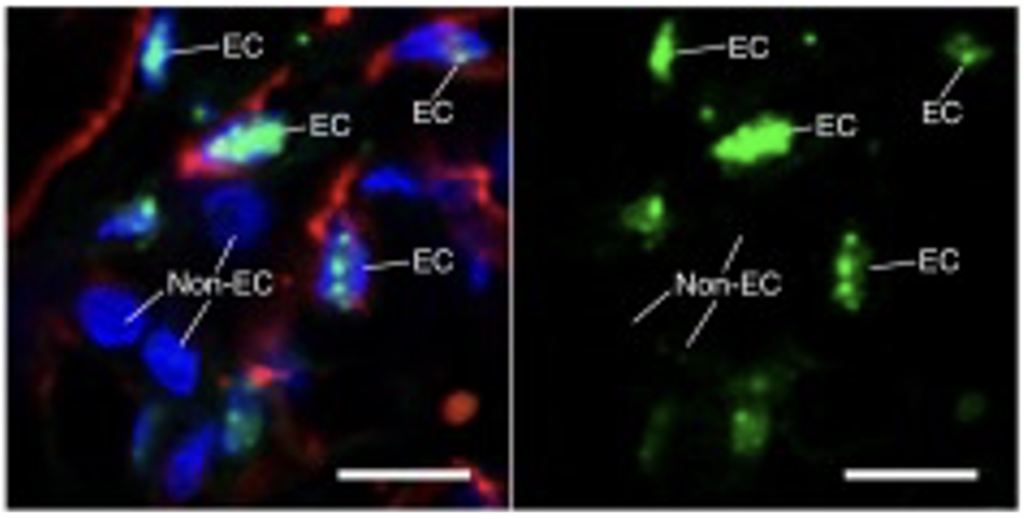Principal Investigator:
Shahin Rafii, Professor of Medicine
Background & Unmet Need
- >800 million people worldwide suffer from chronic kidney disease1, which can progress to end-stage renal disease, requiring dialysis or transplantation
- Many patients with end-stage renal disease undergo complications related to hemodialysis, such as infection, or never receive a kidney transplant
- Kidney organoids could provide an avenue for development of new therapeutics for renal disease, but the heterogeneity of kidney vasculature is a major hurdle for their generation
- The kidney is vascularized with highly specialized and zonated (region-specific) endothelial cells that are essential for its filtration functions, including glomerular endothelial cells
- Unmet Need: Methods for generating functional kidney vasculature and tissue for research and therapeutic purposes
Technology Overview
- The Technology: Method to reprogram human umbilical vein endothelial cells (HUVECs) into human glomerular endothelial cells (HGECs) by expressing the transcription factor Tbx3
- Tbx3 can be used alone or in combination with additional transcription factors—Prdm1, Gata5, and Pbx1—with the best results observed when all four factors are co-expressed
- HGECs could, for example, be co-cultured with kidney podocytes and mesangial cells to construct functional glomeruli
- The Discovery: Tbx3 was identified as a crucial mediator of glomerular development and function through high-throughput bulk single-cell RNA sequencing of kidney vasculature
- PoC Data: Overexpression of Tbx3, alone or in combination with Prdm1, Gata5, and Pbx1, in HUVECs results in gene expression profiles that closely match those found in the human glomerulus
Technology Applications
- Co-culture of HGECs with kidney podocytes and mesangial cells to construct functional glomeruli
- Use of HGECs in high throughput screening for chronic kidney disease drug discovery
- Use of HGECs to build vascularized kidney organoids to model functions of the kidney
- Therapeutic transplantation of HGECs or functional glomeruli to regenerate damaged kidney tissue
Technology Advantages
- HUVECs are readily obtainable as a starting source for HGEC generation
- Flexibility in the methodology used to overexpress Tbx3, Prdm1, Pbx1, and/or Gata1

Immunofluorescent staining in human kidney tissue confirms that Tbx3 protein (green) is restricted to endothelial cells in glomerular capillaries
Publications
Resources
Intellectual Property
Patents
- US Application US20220409670A1: "Generation of kidney glomerular specific endothelial cells and methods of use"
- EP Application EP4061400A4: "Generation of kidney glomerular specific endothelial cells and methods of use"
Cornell Reference
- 9220
Contact Information

For additional information please contact
Louise Sarup
Associate Director, Business Development and Licensing
Phone: (646) 825-3932
Email: lss248@cornell.edu

